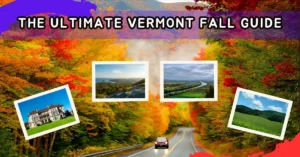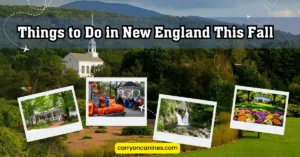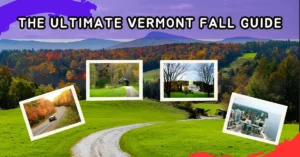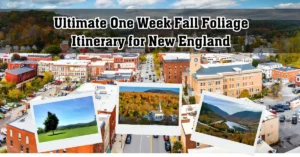Visiting national parks across the United States has been one of the most rewarding and grounding experiences of my life. From the quiet crunch of leaves underfoot in the Great Smoky Mountains to the sizzling steam vents of Yellowstone, these places offer more than scenic beauty—they connect you with something timeless. If you’re planning your first trip or your fifteenth, this guide will give you not just the most beautiful parks but all the real traveler insights I wish I had before visiting.
I’ve personally visited every park mentioned here, and I’ve also spoken with rangers, fellow hikers, and local guides to give you the kind of depth you won’t find in typical roundups. Whether you’re going for the solitude, the wildlife, or the photos—I’ve got your back.
Let’s start strong with the most iconic destinations and what you need to know before you go.
Table of Contents
ToggleYellowstone National Park – Geothermal Wonderland and Wildlife Heaven
State: Wyoming, Montana, Idaho
Best Time to Visit: May–June or September–early October (avoid July crowds)
Known For: Geysers, wildlife, scenic valleys
Why It Stands Out
I’ve never seen a place with more surreal energy than Yellowstone. The earth literally hisses, steams, and bubbles beneath your feet. You’ll find bison walking right across the road, elk bugling at sunrise, and colors in the hot springs that look photoshopped—but they’re not.
Must-See Highlights
● Old Faithful (time it via the visitor center schedule)
● Grand Prismatic Spring (use the Fairy Falls Trail for the best aerial view)
● Hayden and Lamar Valleys (prime wildlife watching at dawn/dusk)
Travel Tip:
Bring binoculars. Spotting wolves or grizzlies from afar makes for unforgettable moments. And yes, timed entry may be required in peak season—always check the NPS website.
Grand Canyon National Park – Layers of Time and Unmatched Vistas
State: Arizona
Best Time to Visit: March–May, September–November
Known For: Immense canyon landscapes, hiking, rafting
Why It Stands Out
No photo can prepare you for the scale of the Grand Canyon. The view hits hard the moment you step up to the rim—1 mile deep, 18 miles wide, and carved by the patient flow of the Colorado River over millions of years.
South Rim vs. North Rim
● South Rim: Open year-round, more developed, family-friendly
● North Rim: Seasonal access (mid-May to mid-October), cooler temps, fewer crowds
Activities Not to Miss
● Sunrise at Mather Point
● Hike into the canyon via South Kaibab Trail (you don’t have to go all the way)
● Mule rides or rafting tours if you’re adventurous
Pro Tip:
Book lodging 6–12 months in advance—seriously, even campsites fill up fast.
Yosemite National Park – Granite Giants and Waterfall Thrills
State: California
Best Time to Visit: May and June (for waterfalls), or September (for fewer crowds)
Known For: Waterfalls, Half Dome, El Capitan
Why It Stands Out
Driving into Yosemite Valley for the first time is unforgettable—especially when you emerge from the Wawona Tunnel and see El Capitan and Bridalveil Fall bathed in golden light. It’s like entering a cathedral built by nature.
Must-Do Activities
● Hike to Vernal Fall via the Mist Trail
● Watch climbers scale El Capitan with binoculars
● Enjoy sunset at Glacier Point
Travel Note:
Half Dome permits are awarded by lottery. Even if you don’t win one, Yosemite offers over 750 miles of trails for all levels.
Acadia National Park – Rugged Coastlines Meet Northeastern Charm
State: Maine
Best Time to Visit: Late spring to early fall
Known For: Coastal views, foliage, sunrise hikes
Why It Stands Out
Acadia blends ocean and mountain in a way no other park does. I biked along car-free carriage roads with fresh sea air in my lungs and caught the sunrise from Cadillac Mountain—where the first rays of sunlight hit the continental US.
Don’t Miss
● Sand Beach and Thunder Hole
● Beehive Trail for moderate adrenaline and views
● Lobster rolls in nearby Bar Harbor (worth every cent)
Insider Tip:
Arrive at Cadillac Summit at least an hour before sunrise. It fills up fast, and the light show is worth every chilly minute.
Zion National Park – Where Heaven Touches Earth
State: Utah
Best Time to Visit: Spring and fall (avoid July heat)
Known For: Slot canyons, towering cliffs, desert oases
Why It Stands Out
Zion Canyon looks like it was chiseled by the gods. Towering cliffs of red and cream stone cradle the Virgin River, and hikes like Angel’s Landing offer jaw-dropping perspectives. I cried on that hike—part fear, part joy.
Top Adventures
● Angel’s Landing (permit required, very exposed)
● The Narrows—walk waist-deep in water through a slot canyon
● Canyon Overlook Trail for big views with less effort
Gear Tip:
Rent water boots and walking sticks for The Narrows. Your feet will thank you.
Arches National Park – Where Stone Defies Gravity
State: Utah
Best Time to Visit: March–May, September–November
Known For: Natural sandstone arches, desert landscapes
Why It Stands Out
There’s a reason Delicate Arch is on Utah’s license plate. These towering structures feel otherworldly. I arrived at dawn, hiked in silence, and watched the arch glow orange under the first light of day. It felt sacred.
Popular Arches to Explore
● Delicate Arch (3-mile round trip, moderate)
● Landscape Arch (longest in North America)
● Double Arch and Windows Section (great for families)
Park Entry Tip:
Timed entry is now required in peak season—make your reservations early. Moab, the nearby town, is also a hub for off-roading and river rafting.
Quick Comparison Table – Choosing the Right Park Based on Your Travel Style
| Park | Best For | Terrain Type | Ideal Visit Time | Accessibility |
|---|---|---|---|---|
| Yellowstone | Wildlife + Geothermal | Forests, geysers, rivers | Spring/Fall | Easy by car, some long drives |
| Grand Canyon | Dramatic views + hiking | Canyon + desert | Spring/Fall | South Rim accessible, North Rim seasonal |
| Yosemite | Waterfalls + granite peaks | Mountains + forest | Late Spring/Fall | Good roads, some areas remote |
| Acadia | Coastal hikes + foliage | Rocky shores + forest | Summer/Fall | Compact, bike-friendly |
| Zion | Slot canyons + viewpoints | Desert + river valley | Spring/Fall | Shuttle service in season |
| Arches | Iconic arches + photo ops | Desert + rock formations | Spring/Fall | Scenic drive, short hikes |
Glacier National Park – Where Alpine Dreams Meet Wildlife Reality
State: Montana
Best Time to Visit: July through early September
Known For: Glaciers, alpine lakes, rugged peaks
Why It Stands Out
Driving the Going-to-the-Sun Road is an experience I’ll never forget. Sharp mountain ridges, sapphire-blue lakes, and grazing mountain goats—it’s like being inside a high-definition nature documentary. But what struck me most was the silence; it’s peaceful in a way few places are.
Don’t Miss Experiences
● Drive the full Going-to-the-Sun Road (reserve ahead)
● Hike to Hidden Lake Overlook from Logan Pass
● Boat tour on Lake McDonald or Two Medicine
Wildlife Alert:
You’re in bear country. Carry bear spray, make noise on trails, and never hike alone early or late in the day.
Great Smoky Mountains – Lush Forests, Misty Peaks, and Fireflies
State: Tennessee and North Carolina
Best Time to Visit: Mid-October (for foliage), late May–June (for fireflies)
Known For: Biodiversity, misty landscapes, old-growth forest
Why It Stands Out
I’ve visited the Smokies in every season, and each time felt different. In fall, every trail explodes in color. In spring, it’s a riot of wildflowers. And if you’re lucky enough to be there in June, don’t miss the synchronous fireflies—pure magic.
Top Things to Do
● Drive Newfound Gap Road and stop at scenic pullouts
● Hike to Alum Cave Bluffs or Laurel Falls
● Visit Cades Cove early for wildlife sightings
Local Insight:
Bring a picnic and head to Clingmans Dome at sunset. On clear evenings, you’ll see rolling blue ridgelines that stretch into forever.
Olympic National Park – A Land of Forest, Sea, and Snow
State: Washington
Best Time to Visit: July–September
Known For: Rainforests, alpine meadows, rugged coastlines
Why It Stands Out
I once stood knee-deep in seafoam on Ruby Beach at sunrise and hiked through the dripping Hoh Rainforest that same afternoon. Olympic is the only place where I’ve seen bald eagles, banana slugs, and snowcapped peaks in one day.
Where to Explore
● Hoh Rainforest Trail – mossy, surreal, peaceful
● Hurricane Ridge – easy access to mountain views
● Rialto Beach and Hole-in-the-Wall – tidepool heaven
Visitor Tip:
Start your day early. Olympic is massive, and drive times between coastal and mountain sections can exceed 2 hours.
Bryce Canyon National Park – A Natural Cathedral of Color and Light
State: Utah
Best Time to Visit: April–May or October (cooler and less crowded)
Known For: Hoodoos, red rock, stargazing
Why It Stands Out
I felt like a kid in a fantasy world the first time I saw Bryce’s hoodoos. They glow like fire at sunrise, then slowly fade into soft golds as the day goes on. I camped here under one of the darkest skies in America—it’s a stargazer’s paradise.
Unforgettable Trails
● Navajo Loop + Queen’s Garden – most scenic short hike
● Peekaboo Loop for serious hikers
● Sunset Point for… well, the name says it all
Bonus:
Winter visits are wildly underrated. The snow-dusted hoodoos look like red-and-white candy canes!
Sequoia & Kings Canyon – Giants of the Sierra Nevada
State: California
Best Time to Visit: Late spring through early fall
Known For: Giant sequoia trees, high peaks, deep canyons
Why It Stands Out
Walking among the sequoias made me feel incredibly small in the best possible way. General Sherman Tree is the largest (by volume) living tree on Earth, and yet it’s not the only one to inspire awe. I spent days here without cell service, and I didn’t miss it for a second.
Must-See and Do
● Hike the Congress Trail from the General Sherman Tree
● Drive the scenic Kings Canyon Road (one of the most underrated drives in the US)
● Climb Moro Rock for panoramic views
Lodging Advice:
Stay in the park if you can. Many cabins and campgrounds offer night skies free of light pollution.
More Traveler Tips – Avoid Mistakes I Made
Essentials to Pack
● Water bottles (most parks lack refill stations deep in the trails)
● Printed maps or offline GPS apps (don’t rely on cell service)
● Layers—yes, even in summer. Mornings can be 40°F cooler than mid-day
● Headlamp or flashlight (sunsets sneak up on you)
● National Parks Pass ($80/year, pays for itself after 3–4 visits)
Planning Advice
● Reserve lodging 6–12 months in advance—especially Yosemite, Glacier, and Zion
● Check fire, flood, or snow closures. Many parks update conditions daily
● Get familiar with park shuttles. Several parks don’t allow cars in peak zones during high season
Timed Entry Parks (as of 2025)
| Park | Timed Entry Required | Notes |
|---|---|---|
| Arches | Yes (March–October) | Required for entrance between 7 AM–4 PM |
| Glacier | Yes (for certain roads) | Applies to Going-to-the-Sun Road only |
| Yosemite | Likely (summer) | Reservation needed for peak hours and dates |
| Zion (Angels Landing) | Permit only | Lottery system in place for the hike |
Bonus Picks – Underrated Parks That Blew Me Away
While the big-name parks draw the crowds, some lesser-known ones have absolutely stunned me with their solitude, beauty, and adventure.
Capitol Reef National Park (Utah)
Why Go: Fewer crowds than nearby Zion or Bryce, but just as much wonder. Red rock cliffs, petroglyphs, and scenic drives make it perfect for road-trippers.
Don’t Miss: The Waterpocket Fold, Cassidy Arch hike, and homemade pies at Gifford Homestead.
Lassen Volcanic National Park (California)
Why Go: This is like a mini-Yellowstone, minus the tourist rush. Boiling springs, bubbling mud pots, and a volcano you can hike.
Top Tip: Visit in July when trails are snow-free but still lush.
Guadalupe Mountains National Park (Texas)
Why Go: Towering limestone peaks, ancient marine fossils, and one of the most underrated summit hikes in America—Guadalupe Peak.
Ideal For: Experienced hikers looking for quiet solitude.
Summary – How to Choose the Right National Park for You
I’ve had the privilege of exploring these incredible places firsthand, and while each offers something unique, your ideal park depends on your travel goals. Use this quick summary to match your mood to the right adventure.
| Traveler Type | Best Parks to Visit |
|---|---|
| First-time Visitors | Yellowstone, Grand Canyon, Yosemite |
| Hikers & Backpackers | Zion, Glacier, Olympic, Guadalupe Mountains |
| Wildlife Enthusiasts | Yellowstone, Great Smoky Mountains, Glacier |
| Fall Foliage Seekers | Acadia, Great Smoky Mountains, Shenandoah (bonus mention) |
| Stargazers | Bryce Canyon, Capitol Reef, Sequoia & Kings Canyon |
| Photographers | Arches, Yosemite, Grand Canyon, Glacier |
| Coastal Lovers | Acadia, Olympic, Channel Islands (bonus mention) |
Final Travel Guidance for First-Time Visitors
Before you hit the road, here are some parting insights from my personal journeys across America’s most iconic wilderness areas:
● Plan early. National parks have seen record-high visitation in recent years. Campsites, permits, and lodges fill up fast.
● Respect nature. Stay on marked trails, don’t feed wildlife, and follow Leave No Trace principles.
● Start your days early. You’ll beat the crowds and enjoy better lighting for photos and quieter trails.
● Talk to rangers. They often share hidden spots, best trail conditions, and safety tips you won’t find online.
● Embrace flexibility. Weather can change plans in an instant—having a backup trail or activity is part of the fun.
Traveling through these parks has changed how I see the world—and myself. The stillness of a redwood grove, the roar of a glacier-fed river, the humbling silence atop a canyon rim… these are not just places to visit, they’re places to feel alive.
Perfect Meta Description
Explore the best US national parks to visit with this detailed, experience-based guide. Get must-see highlights, pro travel tips, data-rich comparisons, and hidden gems to plan your unforgettable national park adventure.




